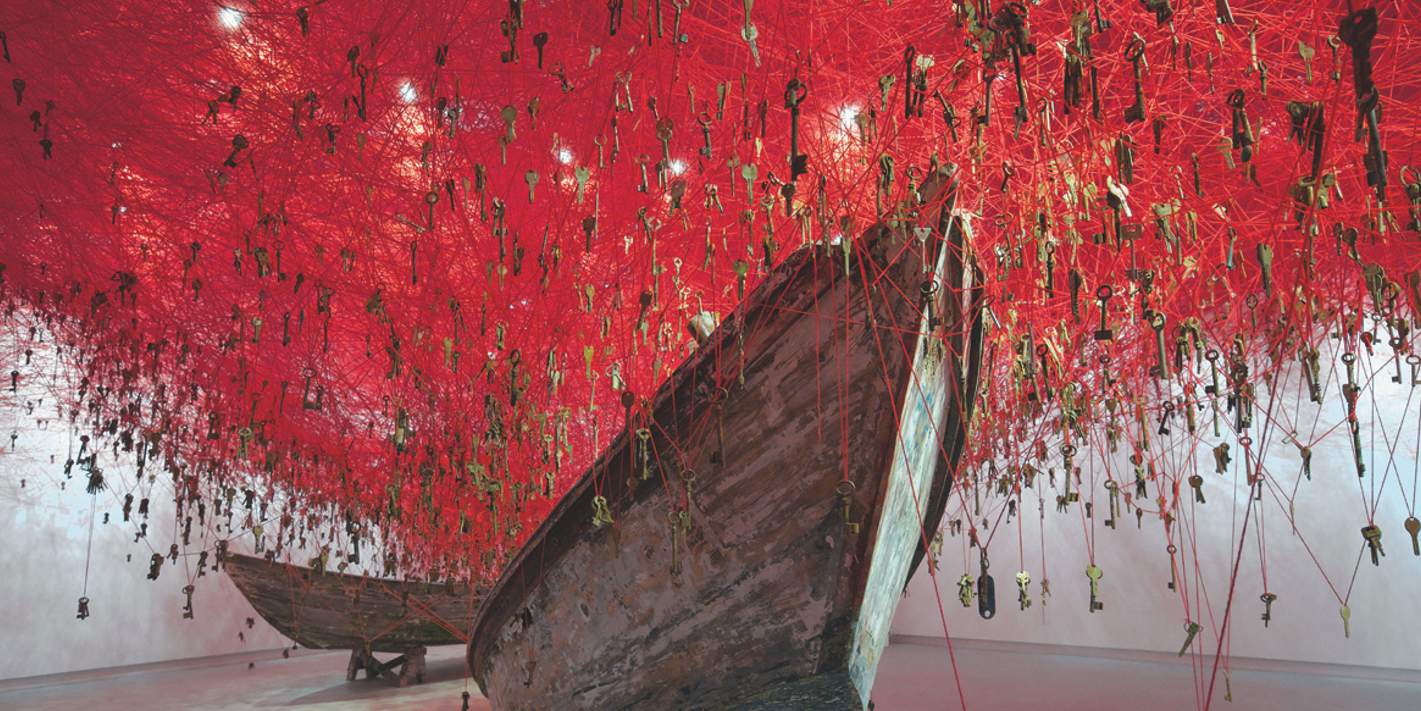The art of doing something with nothing
At the architecture biennale in Venice, British curators will make an empty statement
AT THE Venice Architecture Biennale, which begins on May 26th, the British pavilion will be … an empty shell. The odd wall bracket or plastered wall will hint at previous exhibitions, but there will be far less to please the eye than the display of Phyllida Barlow’s bulbous rock and metal sculptures at last year’s Art Biennale. This is not the first time that a space has been left empty to make a calculated point—it is not even the first time in Venice. Yet far from offering the visitor total interpretative autonomy, artists and curators tend to have fixed ideas about what their emptiness means.
Вернуться на Главную

The device of abandoning the exhibition space was first deployed by Yves Klein, one of the fathers of conceptual art. An exhibition in Paris in 1958—pithily titled “The Specialisation of Sensibility in the Raw Material State into Stabilised Pictorial Sensibility”—left the gallery bare except for some fancy drapes, which created a dramatic entrance, and a single cabinet. Every surface in the otherwise vacant interior was painted white. Klein maintained that the space was saturated with a force field so tangible that some people were unable to enter the exhibition, “as if an invisible wall prevented them”.
It is more likely that they were unable to enter because Klein had undertaken a huge publicity campaign. Three thousand people crammed the street at the opening, and the police were called in. As Klein later recorded in his diary: “The police demanded an explanation as to why money was being charged to see nothing. (Some people, furious at having paid went to complain).” News reports of the event drew in visitors for the rest of the show’s run and Klein’s journey to celebrity began. Looking back on the empty gallery now, there was a presence in it: Klein’s media profile. The only force field present was the one generated by his desire for notoriety.
His precedent encouraged several other inquiries into the relationship between empty space and the artist. In 1975 Chris Burden performed “White Light/White Heat”, wherein he built a triangular platform ten feet above the ground and lay on it for 22 days. As Burden put it: “During the entire piece, I did not eat, talk, or come down. I did not see anyone, and no one saw me.” The idea, presumably, was to test the theory that a gallery could become magically pregnant with an artist’s presence. Emptiness focuses the viewer’s attention on the artist, absent or otherwise.
In the pavilions of Venice, bare space has encouraged the viewer to consider the political intentions of the artist. In 1993 Hans Haacke and Nam June Paik were commissioned to work on the German pavilion in the Giardini, and chose to address the provenance of the pavilion itself as a cypher for German history (pictured). Built in the neoclassical style by Ernst Haiger, an architect for the Third Reich, in 1938, the building became the subject of attack and then disregard. Mr Haacke and Paik jackhammered the marble floor, leaving the pieces in disarray; having then hung the word “Germania” over the entrance, they abandoned the building. As Okwui Enwezor, a critic and director of the Haus der Kunst, a museum in Munich, says: “[the work] called into question the notion of Germany as a constitutive national body…at a time when Germany had been reunited”.
In 2005 Daniel Knorr, a Romanian artist, was commissioned to create work for the Romanian pavilion. He produced a work called “European Influenza” in which nothing more than snatches of light and the traces of previous exhibitions marked the walls. As Raluca Voinea, a critic, noted: “the feeling it first roused was rather melancholic, a state of waiting, of looking in two opposite directions.” The exhibition was accompanied by a book that examined the expansion of the European Union and its effect on Romanian culture, including the way in which local identity would interact with the imposition of pre-established values from outside. There is in the emptiness of the exhibition space a certain helplessness in the face of these historical forces.
As for the British pavilion, the idea is that a temporary structure will create a platform upon which …



































